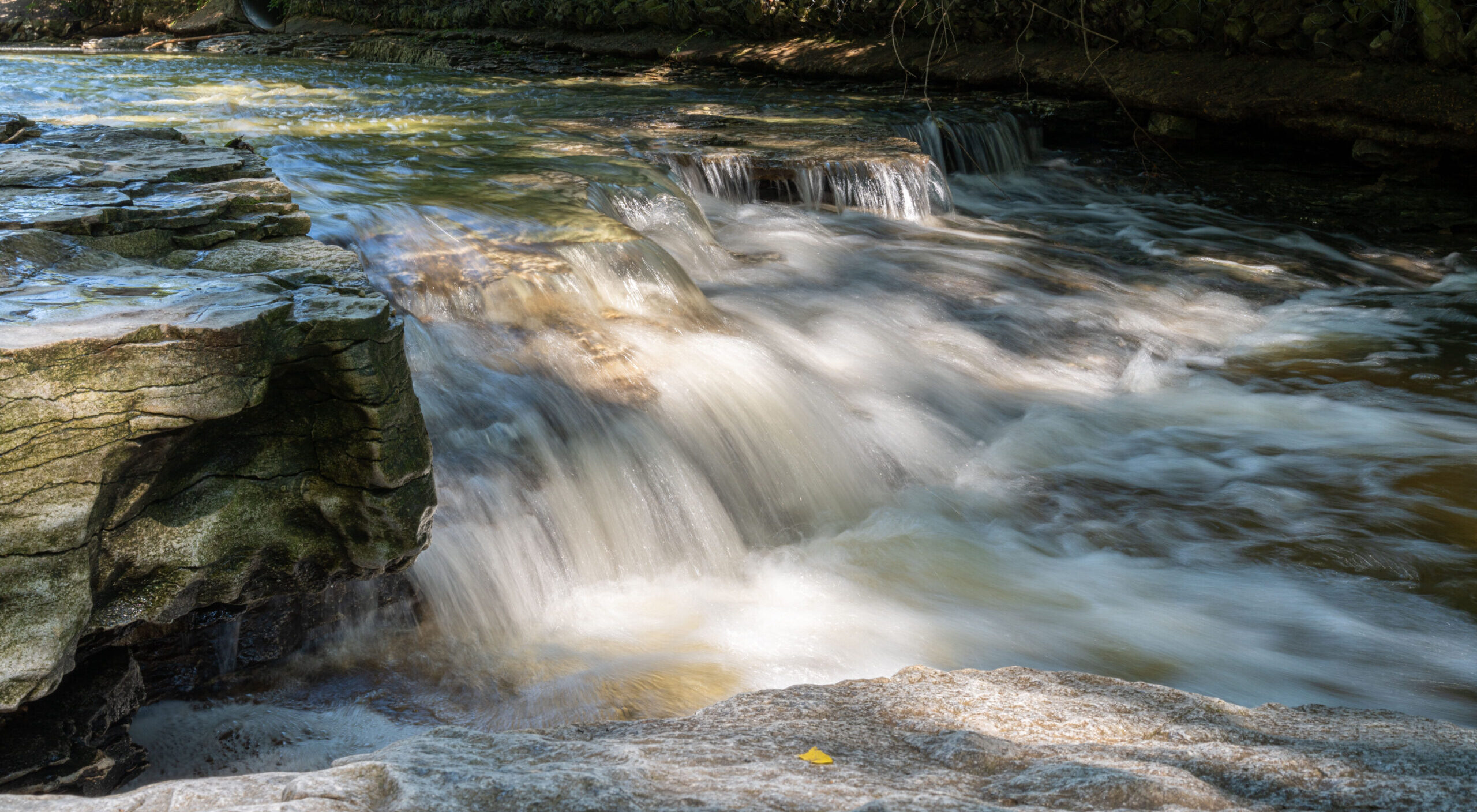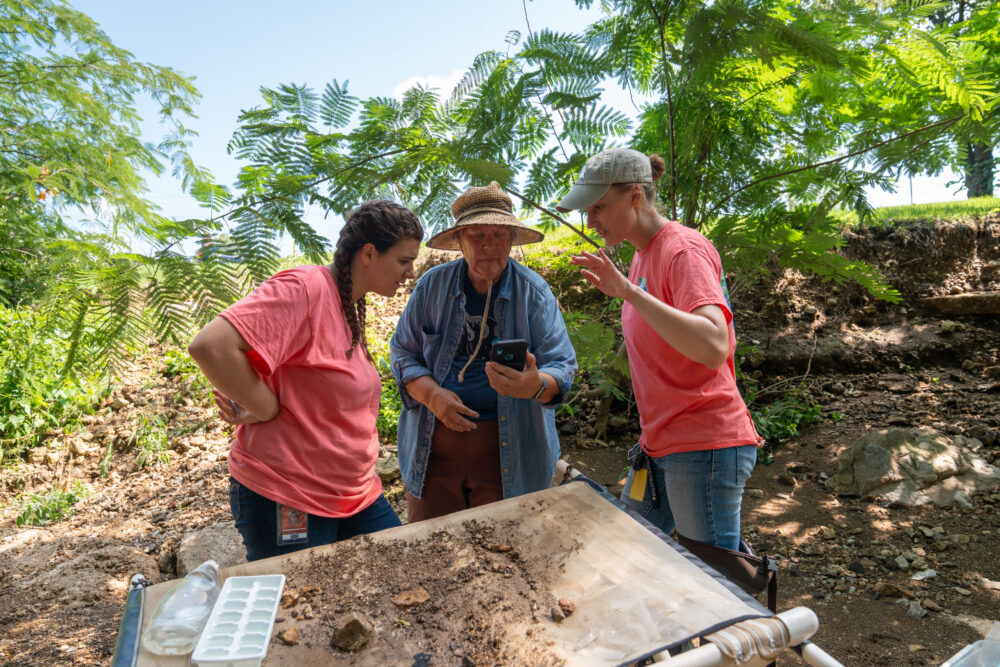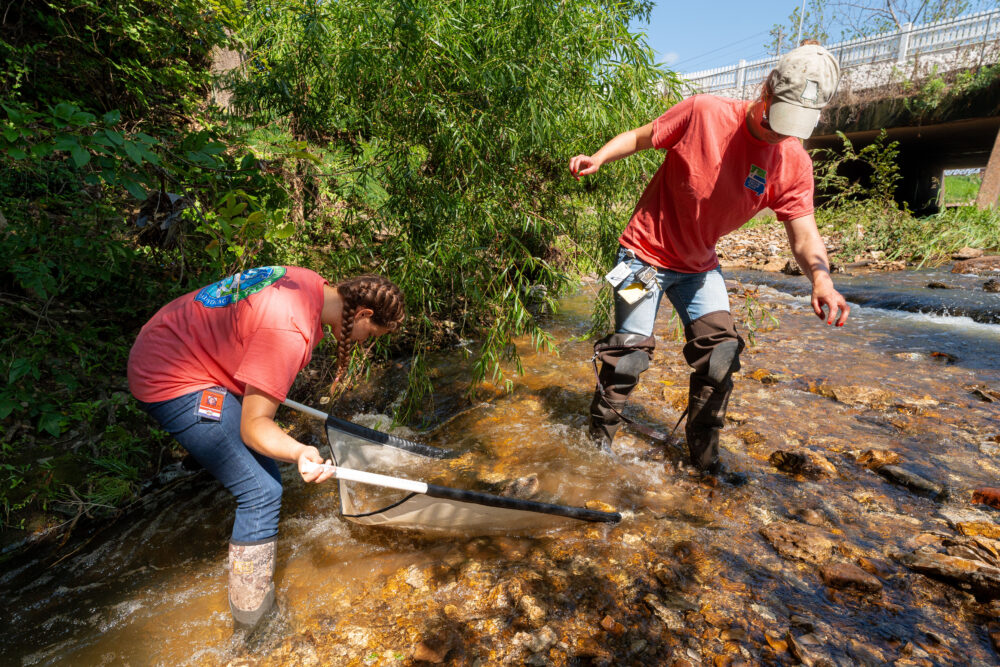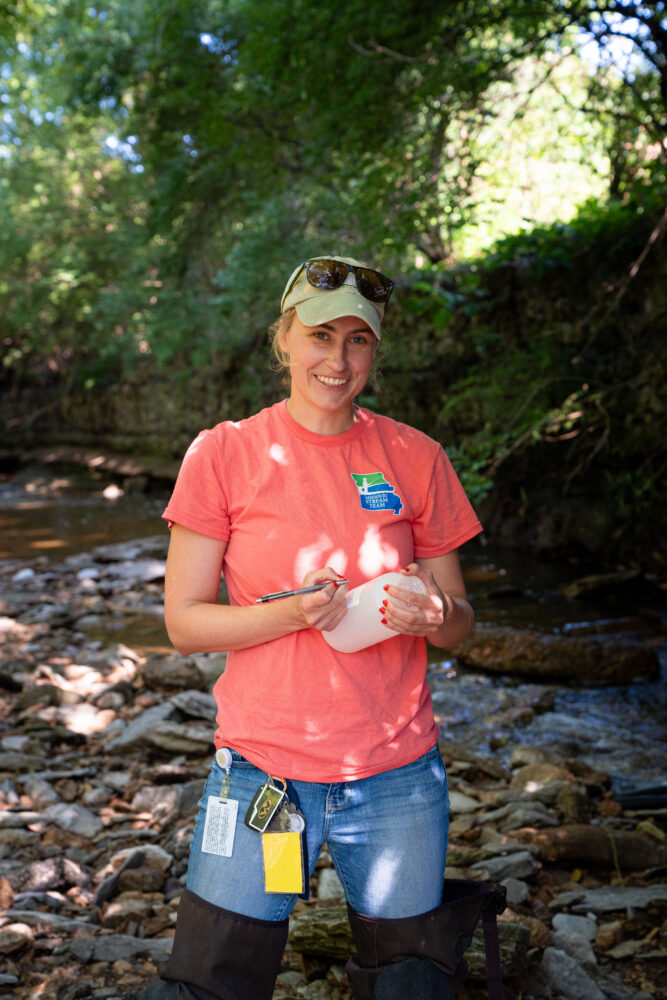Water rushes over the rocks in Grand Glaize Creek near Manchester.
Published by
on
Missouri has over 100,000 miles of streams. From a distance, monitoring all that water would seem like an extreme challenge. But the work of stream team volunteers makes it possible.
The Missouri Stream Team program is a volunteer-led effort sponsored by the Missouri Department of Conservation, Department of Natural Resources and Conservation Federation of Missouri.
Volunteering on a stream team can entail trash pickups, planting trees or even going into the water and taking samples. Whatever activity volunteers decide to partake in, the necessary equipment and training are provided free of charge.
“It’s satisfying to be a part of the hands-on effort to monitor the local water quality,” said Cori Westcott, a stream team volunteer who has monitored the 4-mile Grand Glaize Creek, located west of St. Louis, for the past 14 years.
Her up-close view allows her to witness firsthand the effects that floods, heat, snow and other changes in the environment have on a stream.
Westcott first got involved in her local stream team in 2010 as part of a coordinated study program started by two individuals in her area. Trained volunteers would monitor sites, share the findings with each other and mail the results to the program. Now coordinator of the program, Westcott said advances in technology have made her job easier, as looking at stream data is as simple as pulling up an interactive map.
In 2022, more than 16,000 people volunteered on Missouri’s stream teams, removing 194 tons of trash from Missouri’s rivers and streams, completing 454 water quality monitoring trips, and planting 14,386 trees.
“Volunteers play an incredibly important role in preserving the health of Missouri’s streams,” said Laura Richardson, a coordinator of MoDNR’s Volunteer Water Quality Monitoring Program. “There have been numerous occasions in which volunteers’ work and data have saved the health of certain streams.”
Volunteers often notify the department about land disturbances, fish kills or environmental concerns, which allow MoDNR’s regional offices to take action before the issue becomes catastrophic.
“Volunteers are the boots on the ground,” said Richardson. “They’re people who actually live in the communities, living near streams; they’re playing in streams, so they’re more interested and involved with caring for a local resource.”
When taking a biological sample, one or more volunteers equipped with a net wade into a current no deeper than the knees. They then perform a “benthic boogie,” in which they dig their feet into the riverbed and kick up sediment, exposing aquatic life in the crevices of the floor. The volunteer then digs their net in and scoops the bugs out of the stream.
At the streambank, the the various organisms living in the waterway are laid out and identified. The more diversity, the healthier the stream.
Richardson said the advantage of taking a biological sample is that it tells the story of a stream over a long period of time. While a chemical sample is instantaneous, it only provides a snapshot of a stream’s water quality. But since rivers and creeks are always moving, chemical compositions always have the potential to change.
“With aquatic life, some bugs can live within the stream for years,” Richardson said. “So if you’re finding some sensitive bugs present that can live for multiple years, that’s showing that the water quality has been high for a good period of time.”
To start or join a stream team in your area, sign up on the Missouri Stream Team webpage. A stream team liaison will email you with information to help you get started shortly after you sign up.
To learn more about stream teams or to volunteer, visit MoDNR’s Volunteer Water Quality Monitoring Program.








